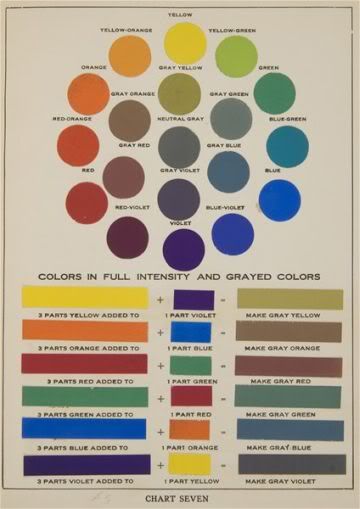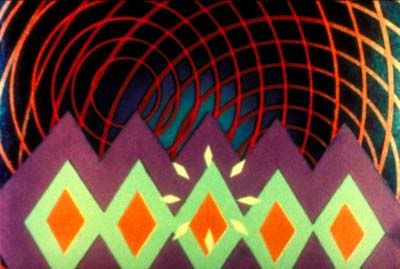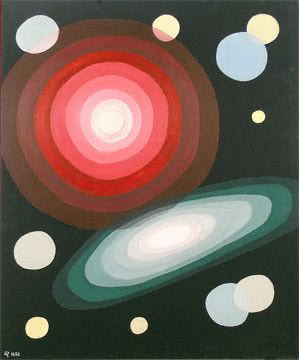Apocalypstick
This week the brilliant exhibition Apocalypstick, curated by artists Sian Hislop and Jeremy Willett, opens at the Nunnery Gallery in Bow. I was delighted to be asked to write something to accompany the show. Here it is.
In cartoons,
one sees brightly coloured stars in such circumstances. In hospitals, she
ponders, one cannot see the colour which slides straight through her make-up,
her skin, her eyes, paints the inside of her head, her broken nose. The
ability of the short and energetic x-ray wavelength to pass through obstacles –
alternatively its inability to rest, to lazily and gloriously pool itself on a
surface – was what excited her about colour.
And these qualities of different wavelengths were like a book of strategies
for her: to pass through solid objects or to decorate surfaces.[i]
Out
of the darkness creeps bright things. Daily we move through colour from night
shades, past grey, into weak sun, to luminosity – bright then melting back into
dark shading again; the palindromic colour chart of the day. Out of the dark
and into the light. There is a sense of something to escape or be rescued from
– to emerge from concealment in shadows into Chromomagnificence. Light suggests the spectrum, a band of possible
hues latent within white, available to be split and mixed. The fantastic comes
into life beneath the spot light; buds crack open; things wake up; we are
compelled to dance - we need to see things
in order to bathe in their glory.
There is no spectrum within black; darkness absorbs,
contains and keeps. ‘Colour is swallowed
by the dark.’[ii]
But whereas colour ricochets with light - tones shifting treacherously and
evading definite capture – darkness holds colour. Or rather, colour becomes it.
Rainbow specks lurking between the crosshatch; black is never dull. It is
luminescence and gloss or else depth and texture. “In black lies the
possibility of hope”[iii].
And if colour ascends/escapes from darkness then it must sometimes dwell there
– within it achieving a solid radiance, foregrounded more sharply than it can
be against the day.
The
utter dark of space kicks out eternal light from planets; ridiculous life forms
glow neon at the blind depths of the sea; cartoon-bright stars circle in the
dull dark of a concussion; luminous Marilyn’s emerge from Warhol’s light sealed
Factory; the x-ray ‘paints the inside of her head’ –radiating the skull beneath
the skin - brilliant brightness of bone amid corporeal darkness.
The
dark side is multihued – a motley alternative destination to the monochromy of
tyrannical white[iv].
“We are not just surrounded by colour; we are colour ourselves”[v] that is
until fear sets in and we lose it. Not
always pure and redemptive, terror is physically realised by the draining of colour
from the cheeks; a sick nose dive from pleasure into white-out. White/Light is
what remains when colour goes. It is a better absence than the chromatic
possibilities of the void or black hole.
In
darkness we can see colour, as opposed to being blinded by it. We can revel in
it too – and like all negative spaces between
words/translations/history/gesture/thought/event, this dense gap offers itself
up in art to be squared with the visual and experiential. The fascinating
possible contents of the void clamour to be shaped and drawn.

In
art it is difficult for the use of colour to remain passive or accidental, such
is the eloquence of its language and range of its referential field. Within
abstraction there exists the possibility of a shared recognition of the
meanings and nuances suggested by particular single colours or combinations of
colours. Some kind of common chromatic vocabulary through which the artist may
transcend form without abandoning subject. Within objectification colour
occupies the status of the found - reflecting the world around us. Creeping from
kitchen cupboards and onto canvasses or sculptural surfaces – sliding back and
forth between the realm of art and that of experience.
But
even in anger no one sees the same red.[vi]
Rouge de
vamp ou de vampire
C'est avec ce crayon que s'inscrit mon délire[vii]
C'est avec ce crayon que s'inscrit mon délire[vii]
The
multitudinous possibility of colour is there to be harnessed, each shade
resonating a different note from eye to eye, surface to surface, delirium to
delirium. Colour is polyphonic then, able to communicate in many voices at
once, an incessant hubbub of sent and received references, tinted memories and
recollections to and from the viewer. This din is perhaps what forms the notion
of chroma as a sign of madness or
misrule - the cacophonous noise of the colour clash threatening to render
things insensible.
Multicolour
- fervent and fast - travelling in waves of ‘troubled light,’[viii] has
the ability to split skulls and addle perfectly sound minds. But what about its
equal tendency to rest decorously[ix];
draping and caking like make up. The colour palates we inhabit are subject to
constant change, just as shades remain inconstant in light, there is no fixed
or empirical chromatic schema to the man-made world. Where we are able to
exercise control in our surroundings we do so by either indulging a
schizophrenic desire to decorate and re decorate, or else we fall, overwhelmed
into the infinite arms of white – fooled by the notion that purity has
shades.
There
is something sublime in the possibility of choosing to colour your world; not
abandoning its recognisable forms and functions but just skewing them, perhaps
returning them to the way you always supposed they should be; of screwing tight
your eyes, plunging yourself into darkness and attempting to forget the hues
that plague you. In the dark negative – the presence of other colours becomes
possible.
Re
Apply/Re Colour / Re Decorate.
Pick
up your pencil and register your delirium.[x]
[i]
Reena
Spaulings, Bernadette
Corporation (New York: Semiotext(e),2004)
[ii] On
Painting, Leon Battista Alberti (London: Penguin, 2001)
[iii] Chroma,
Derek Jarman (London: Vintage, 1994)
[iv] Reference to discussion in the chapter
‘Whitescapes’ in Chromophobia, David
Batchelor (London: Foci, 2000)
[v] Chromophobia,
ibid.
[vi] This is a reference to a section from
Josef Albers Interaction of Colour
from 1963 in which the subjectivity of the colour red is discussed at length.
[vii] Apocalypstick,
Serge Gainsbourg (Lyric) 1969 © Melody Nelson Publishing
[viii] Goethe, referenced in ‘Black Moods’,
Gabriel Ramin Schor. (TATE etc, Issue 7, Summer 2006)
[ix] See opening quote from Reena Spaulings.
[x] Rough translation of the Gainsbourg
lyric.




Comments